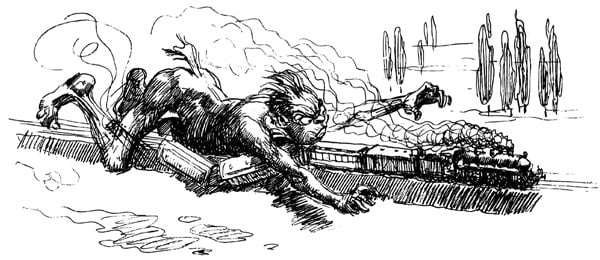
One World Trade Center (the skyscraper formerly known as the Freedom Tower) is 26 stories high and beginning to poke its head into the downtown skyline. Even at quarter-height, its density and bulk are evident, and you can start to grasp how jammed up against the path tracks it is. Its neighbor at Four World Trade is up to about five floors, hard by the 1 train that continually rattles through the center of the site. The two memorial pools are framed out, and underground construction is moving forward on Santiago Calatrava’s swoopy transportation hub. Foundation work for Towers 2 and 3 starts next month, and the contaminated Deutsche Bank building, looming over the southern end of the site, will come down later this year to make way for Tower 5. Libeskind’s abiding idea—five towers standing guard around a sunken memorial—is inching toward reality. —“The Complex,” Christopher Bonanos, New York
When does big get so big we fail to understand how big it is?
in the city of the future, all privileges for the elderly will be revoked;
the illusory quality of nuclear progress;
money works!
Joan Wallach Scott is not just a “feminist.” On the contrary, she “personifies the preconceptions and biases of academic women’s studies,” above all in her embrace of the nihilistic, biased relativism that thrives in so many Western universities today. We call the relativism “biased” because it’s not an “all-cultures-are-equal” relativism. It’s an “all-cultures-are-equal-but-some-are-more-equal-than-others” variation on the species. It’s a relativism with a definite preference for non-Western, and especially non-American, societies and cultures. (We hasten to acknowledge that this preference is a largely theoretical activity. When it comes to such pedestrian matters as living arrangements, personal amenities, salaries, and pensions, you can still discern a marked preference for the Western way of life). —“Tolerating Intolerance, New Criterion
Buy dengue fever; redline the poor right out of your ivory tower;
you will never see the outside of this prison, pervert (say with Clint Eastwood snarl for full effect)
It’s funny, really. We base our professional lives on something as precise as the definitions of “love” or “happiness” and, like those ideas, we are convinced that brands are vitally important and absolutely, objectively real. Then we wonder why they’re so hard to measure, or why our C-suite associates have such trouble sharing (and consistently funding) our beliefs. Mention ROI all you want, but most CMOs are in the verse business, not prose. —“Our Measurement Problem Begins With Definitions,” Jonathan Salem Baskin, Advertising Age


